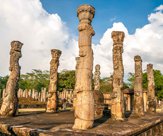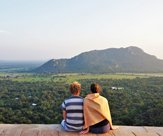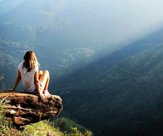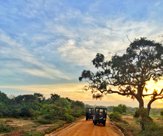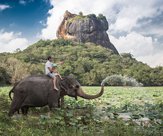Duruthu Poya celebrates Gautama Buddha’s momentous first visit to Sri Lanka twenty five centuries ago and marks the country’s initiation to the teachings of Buddhism.
When the full moon spreads its light over the island of Sri Lanka, business activities cease and followers of the Buddhist teachings engage in meditation and meritorious deeds. It is the first full moon Poya day of the year, in the month of Duruthu.
When the full moon appears at approximately the same time every month, it is known as ‘Poya’ here in Sri Lanka, a term derived from the Pali and Sanskrit word Uposatha meaning “day of fasting”. It is said that ancient Asian ascetics used the full moon to mark the passing months, since there were no calendars at the time. Ceasing worldly pursuits and engaging in spiritual activities on this day was the practice even in those ancient times and it was adopted by Gautama Buddha during his lifetime spent spreading the message of peace.
What the Blessed One accomplished
It was nine months after his Enlightenment, and his visit to Mahiyangana in Sri Lanka’s Uva Province had a noble purpose. He wanted to restore peace and dispel war and violence. “To free the beautiful land from the evil doing Yakkhas” states the Mahavamsa, an ancient chronicle which records the awe-inspiring saga of this proud island nation. The backdrop to this historic visit was one of hostility with the two main tribes the Yakkhas and Nagas in constant confrontation. Buddhists believe that Sumana Saman beseeched Lord Buddha to end this strife and restore peace, and to this end the Enlightened One arrived at the Mahiyangana Mahanaga Grove one Duruthu Full Moon Poya day.
Legend has it that Lord Buddha stood before the gathering of Yakkhas radiating a halo of rainbow-hued light from his body. They however thought he was an invader and their soldiers took up arms. It was through His supreme supernatural powers that peace was brought about and the Yakkhas were subjugated. Then the Blessed One preached the message of peaceful coexistence to those who flocked to hear his words. One of them was Sumana Saman who attained Sotapanna (Sovan) (the first of the four paths / stages that lead to Nirvana) and he begged Lord Buddha for a relic to pay homage to once He had left them. Some locks of Lord Buddha’s hair (Kesa Dhathu) were laid in a gold casket which Sumana Saman enshrined in a small stupa built at the site where all this occurred, now known as the Mahiyangana Raja Maha Vihara. This monument enters the annals of this country’s history as the first stupa built in Sri Lanka.
Following Lord Buddha’s Parinirvana in 543BC the collar bone relic (Greeva Dhathu) which was recovered from the funeral pyre was brought to Sri Lanka by Arahant Sarabha Thera. This too was enshrined in the newly enlarged Mahiyangana Raja Maha Vihara.
Duruthu Poya: Reminders of a beautiful past
Duruthu Full Moon Poya day is a reminder of that miraculous event many centuries ago. If the legend itself seems a dreamlike illusion, the Mahiyangana Raja Maha Vihara serves as physical substantiation that it was indeed real. Sri Lanka Tours to such cultural sites would make any visit to this island more meaningful and it would certainly be a journey back through the ages, with lessons to be gleaned for a lifetime…

